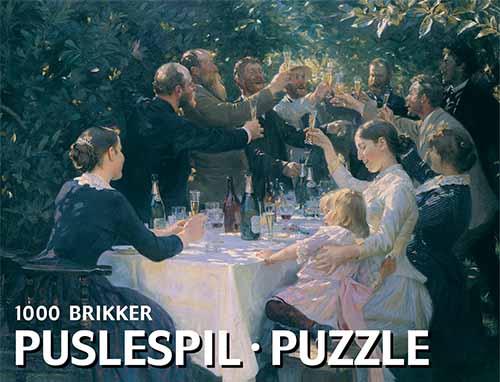- Gratis fragt over 799 kr.
- 3-5 dages levering
- Trustpilot
- Pricerunner
Leveringstid: Desværre udsolgt fra forlaget
Crisis, Miracles, and Beyond
How did Denmark avoid a macroeconomic catastrophe in the 1980s and 1990s and still manage not only to maintain but also expand its welfare state? Critics of the welfare state identified the vices behind Denmark´s macroeconomic troubles as its enormous, thoroughly unionized, and unresponsive public sector combined with the large numbers of people who relied on the welfare state for their livelihood and thus made programmatic cuts politically difficult. Taxes for this welfare state compressed investment, eroding both fiscal and current account balances. Yet by the mid-1990s, public support for the welfare state was as high as ever, while fiscal and current accounts were essentially in balance, and in the 2000s Denmark emerged as one of Europe´s strongest economies.
The authors of this book suggest that most of the vices the traditional welfare state scholarship identifies are also virtues. The book uses analyses of general macroeconomic policy, center-local relations, budgeting, labor market, and welfare state transfers and services in three critical areas to present a comprehensive picture of the governance of and interactions between the Danish welfare state and political economy at all levels. A critical introductory survey of the welfare state literature and a synthetic conclusion frame these studies.
313,20 kr.
Ikke på lager
Varenummer: 9788772888248
Sidetal: 306
Sprog: eng
Format: Hæftet
Kategorier: Bøger, Samfund, div.
How did Denmark avoid a macroeconomic catastrophe in the 1980s and 1990s and still manage not only to maintain but also expand its welfare state? Critics of the welfare state identified the vices behind Denmark´s macroeconomic troubles as its enormous, thoroughly unionized, and unresponsive public sector combined with the large numbers of people who relied on the welfare state for their livelihood and thus made programmatic cuts politically difficult. Taxes for this welfare state compressed investment, eroding both fiscal and current account balances. Yet by the mid-1990s, public support for the welfare state was as high as ever, while fiscal and current accounts were essentially in balance, and in the 2000s Denmark emerged as one of Europe´s strongest economies.
The authors of this book suggest that most of the vices the traditional welfare state scholarship identifies are also virtues. The book uses analyses of general macroeconomic policy, center-local relations, budgeting, labor market, and welfare state transfers and services in three critical areas to present a comprehensive picture of the governance of and interactions between the Danish welfare state and political economy at all levels. A critical introductory survey of the welfare state literature and a synthetic conclusion frame these studies.
| Vægt | 592 g |
|---|---|
| Størrelse | 19 × 166 × 247 mm |
| Forlag | Aarhus Universitetsforlag |
| Udgivelsesdato |
Relaterede varer
-
Bøger under 100 kr
Among Thieves
85,95 kr.Original price was: 85,95 kr..68,76 kr.Current price is: 68,76 kr.. Tilføj til kurv -
prisvogter
Husband Material
85,95 kr.Original price was: 85,95 kr..68,76 kr.Current price is: 68,76 kr.. Tilføj til kurv -
prisvogter
My Mechanical Romance
82,95 kr.Original price was: 82,95 kr..66,36 kr.Current price is: 66,36 kr.. Tilføj til kurv -
prisvogter
Shackleton
105,95 kr.Original price was: 105,95 kr..84,76 kr.Current price is: 84,76 kr.. Tilføj til kurv
- Stort udvalg
- Fri fragt ved køb over 799,-
- Levering ned til 1-2 hverdage
- Nem retur
- 30 dages returret
Crisis, Miracles, and Beyond
SKU: 9788772888248
313,20 kr.
Leveringstid: Desværre udsolgt fra forlaget
Kategorier: Bøger, Samfund, div.
Format: Hæftet
Sprog: eng
Sidetal: 306
How did Denmark avoid a macroeconomic catastrophe in the 1980s and 1990s and still manage not only to maintain but also expand its welfare state? Critics of the welfare state identified the vices behind Denmark´s macroeconomic troubles as its enormous, thoroughly unionized, and unresponsive public sector combined with the large numbers of people who relied on the welfare state for their livelihood and thus made programmatic cuts politically difficult. Taxes for this welfare state compressed investment, eroding both fiscal and current account balances. Yet by the mid-1990s, public support for the welfare state was as high as ever, while fiscal and current accounts were essentially in balance, and in the 2000s Denmark emerged as one of Europe´s strongest economies.
The authors of this book suggest that most of the vices the traditional welfare state scholarship identifies are also virtues. The book uses analyses of general macroeconomic policy, center-local relations, budgeting, labor market, and welfare state transfers and services in three critical areas to present a comprehensive picture of the governance of and interactions between the Danish welfare state and political economy at all levels. A critical introductory survey of the welfare state literature and a synthetic conclusion frame these studies.
| Vægt | 592 g |
|---|---|
| Størrelse | 19 × 166 × 247 mm |
| Forlag | Aarhus Universitetsforlag |
| Udgivelsesdato |
Relaterede varer
-
prisvogter
Shackleton
105,95 kr.Original price was: 105,95 kr..84,76 kr.Current price is: 84,76 kr.. Tilføj til kurv
- Stort udvalg
- Fri fragt ved køb over 799,-
- Levering ned til 1-2 hverdage
- Nem retur
- 30 dages returret







